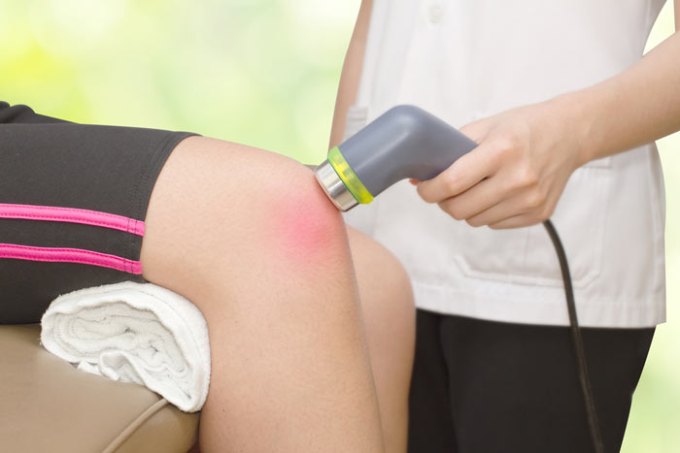
Because
the body's nerves are electrical conductors, medical professionals have
long held that stimulating nerve endings with small electrical current
can produce beneficial results.
The theory behind electrotherapy as part of Chiropractic Care is that such stimulation to affected nerves and muscles encourages the body to release pain-killing chemicals, such as opiates and endorphins, and blocks pain signals from being transmitted to the brain.
Electrotherapy is a Pain Management technique, and as such, is part of an overall chiropractic treatment regimen. Electrotherapy is usually involved in the early treatment stages, especially right after an injury. Ice and heat therapy may be combined with electrotherapy to boost its pain-killing powers.
Electrotherapy normally involves placing small adhesive pads on the skin at various points on the body. Electrotherapy is generally not painful. The adhesive pads may cause a minor skin irritation after being removed, and in some instances, patients may feel a mild stinging after therapy.
The theory behind electrotherapy as part of Chiropractic Care is that such stimulation to affected nerves and muscles encourages the body to release pain-killing chemicals, such as opiates and endorphins, and blocks pain signals from being transmitted to the brain.
Electrotherapy is a Pain Management technique, and as such, is part of an overall chiropractic treatment regimen. Electrotherapy is usually involved in the early treatment stages, especially right after an injury. Ice and heat therapy may be combined with electrotherapy to boost its pain-killing powers.
Electrotherapy normally involves placing small adhesive pads on the skin at various points on the body. Electrotherapy is generally not painful. The adhesive pads may cause a minor skin irritation after being removed, and in some instances, patients may feel a mild stinging after therapy.
Common types of electrotherapy include:
- Galvanic stimulation (GS) - High voltage pulsed galvanic stimulation has been used in acute low back pain to reduce muscle spasm and soft tissue edema (swelling). It is commonly used despite the lack of hard scientific evidence for its efficacy. Its effect on muscle spasm and pain is felt to occur by its counter-irritant effect, effect on nerve conduction, and a reduction in muscle contractility.
- Radiofrequency rhizotomy - Normally used for chronic cases of facet joint syndrome, a degenerative condition in which joint cartilage wears thin, causing stiffness, inflammation, muscle spasms, and later osteoarthritis. This procedure applies heated radio-frequency waves to the joint's nerves that carry painful impulses.
- Transcutaneous Electrical Nerve Stimulation (TENS) - This is the most common type of electrical stimulation used today. TENS therapy is normally used to treat chronic, or long-term pain in the lower back. Small electrodes are placed inside an elastic-type belt worn around the lumbar region. Percutaneous electrical nerve stimulation (PENS), an enhanced and newer type of pain management therapy, makes use of very thin needles (much like those in acupuncture), which are inserted in the lower back by the chiropractor. Small, battery-powered TENS units also are available for use at home, work, or other activities. The patient is able to control the level and frequency of stimulation, and self-administer impulses during episodes of pain.
- Interferential current (IFC) - This is a kind of TENS therapy in which high-frequency electrical impulses are introduced deep into the tissues near the center of the pain.
No comments:
Post a Comment